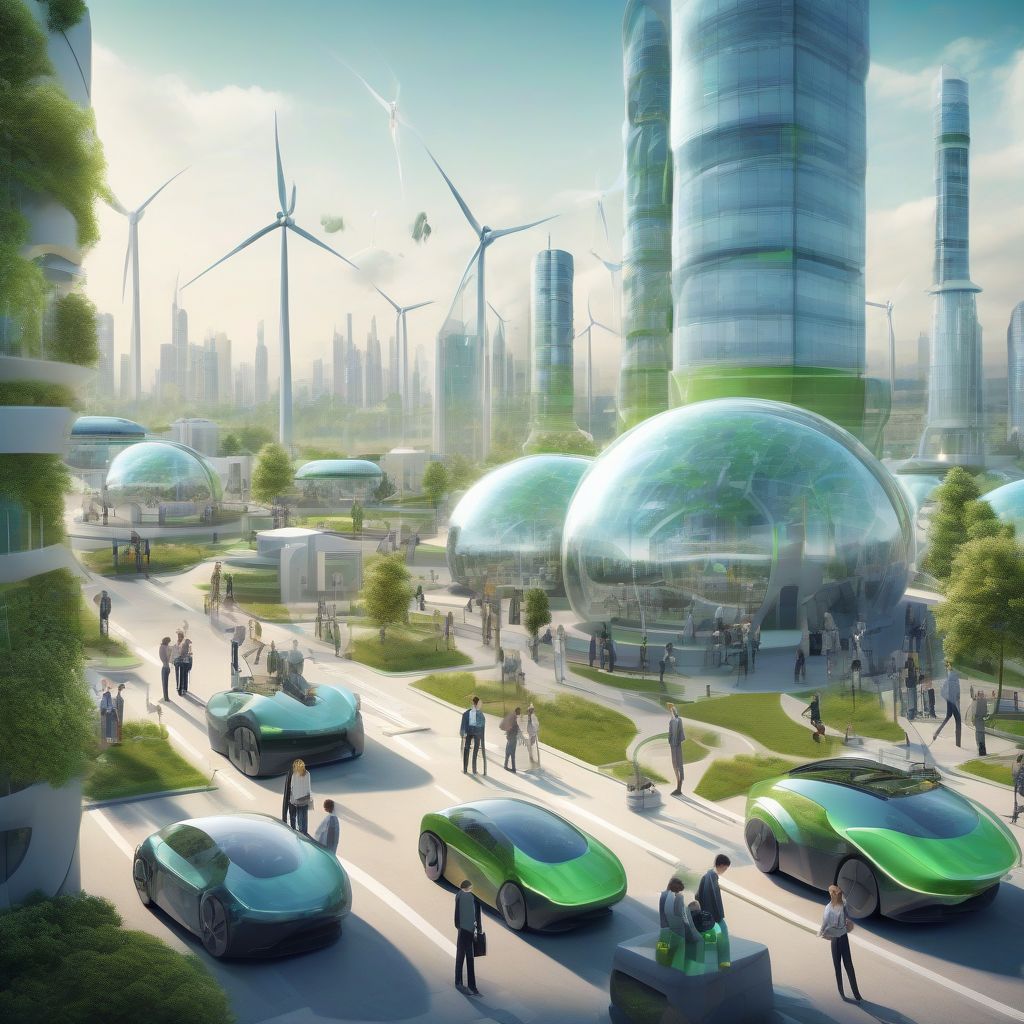Imagine a world powered by clean energy, where innovation thrives and investment flows towards sustainable solutions. This isn’t a utopian dream, but a rapidly approaching reality. The future of clean tech investment and innovation hubs is bright, driven by pressing global challenges and a burgeoning awareness of the need for a sustainable future. This article explores the key trends shaping this exciting landscape, from the rise of green hydrogen to the crucial role of policy and international collaboration.
Driving Forces Behind Clean Tech Investment
Several factors are propelling the growth of clean tech investment. The most obvious is the urgent need to address climate change. Governments worldwide are implementing policies and setting ambitious targets to reduce carbon emissions, creating a favorable environment for clean tech investment. Furthermore, the decreasing cost of renewable energy technologies like solar and wind power has made them increasingly competitive with fossil fuels, attracting significant investment from both public and private sectors.
The Role of Innovation Hubs
Innovation hubs play a crucial role in accelerating the development and deployment of clean technologies. These hubs bring together researchers, entrepreneurs, investors, and policymakers to foster collaboration, share knowledge, and drive innovation. They provide essential resources, mentorship, and networking opportunities for clean tech startups, helping them to scale and commercialize their solutions. “As a leading clean tech investor, I’ve seen firsthand the transformative power of these hubs,” says hypothetical venture capitalist, Sarah Miller, partner at GreenFuture Capital. “They are the engines of the clean energy revolution.”
Key Investment Areas in Clean Tech
Several clean tech areas are attracting significant investment and are poised for substantial growth in the coming years. These include:
Renewable Energy
Renewable energy sources like solar, wind, and hydropower continue to be a major focus of clean tech investment. Advancements in energy storage technologies are further enhancing the viability of renewables by addressing the intermittency challenge.
Green Hydrogen
Green hydrogen, produced using renewable energy, is emerging as a promising fuel for various sectors, including transportation, industry, and heating. Investment in green hydrogen production and infrastructure is expected to surge in the coming years. “Green hydrogen is the missing piece of the puzzle,” says Dr. Emily Carter, a hypothetical professor of sustainable energy at Stanford University. “It has the potential to decarbonize sectors that are difficult to electrify.”
Sustainable Transportation
The transportation sector is a significant contributor to greenhouse gas emissions. Investment in electric vehicles (EVs), charging infrastructure, and alternative fuels like biofuels and hydrogen is driving the transition towards a more sustainable transportation system.
Carbon Capture and Storage
Carbon capture and storage (CCS) technologies capture CO2 emissions from industrial processes and power plants and store them underground. While still relatively nascent, CCS is gaining increasing attention as a crucial tool for mitigating climate change.
The Importance of Policy and Collaboration
Government policies play a vital role in shaping the future of clean tech investment. Supportive policies, such as carbon pricing mechanisms, tax incentives, and renewable energy mandates, can create a favorable investment environment and accelerate the adoption of clean technologies. International collaboration is also essential for addressing the global challenge of climate change. Sharing best practices, coordinating research efforts, and fostering cross-border investment can accelerate the transition to a clean energy future.
Challenges and Opportunities
While the future of clean tech is promising, challenges remain. Scaling up clean technologies to meet global energy demand requires significant investment and infrastructure development. Furthermore, ensuring a just and equitable transition to a clean energy economy is crucial. However, these challenges also present significant opportunities for innovation and investment. The transition to a clean energy future will create new jobs, stimulate economic growth, and improve public health.
Regional Innovation Hubs: Case Studies
Examining successful clean tech hubs reveals valuable insights. Silicon Valley, with its robust venture capital ecosystem and concentration of tech talent, has been a hotbed for clean tech innovation. Similarly, regions like the Nordic countries, with their strong policy support for renewable energy, have emerged as leaders in clean energy deployment. These examples demonstrate the importance of a supportive ecosystem for fostering clean tech innovation and investment.
The Future is Green
The future of clean tech investment and innovation hubs is bright. Driven by the urgency of climate change, declining costs of renewable energy, and supportive policies, the clean tech sector is poised for explosive growth. Innovation hubs will continue to play a critical role in accelerating the development and deployment of clean technologies, paving the way for a sustainable future. The transition to a clean energy economy is not just an environmental imperative; it is also a tremendous economic opportunity. By investing in clean tech, we are investing in a healthier, more prosperous future for all.
 Clean Tech Investment Hub
Clean Tech Investment Hub
Conclusion
The journey towards a sustainable future is powered by clean tech innovation and investment. From renewable energy and green hydrogen to sustainable transportation and carbon capture, the opportunities are vast and the potential impact is transformative. Innovation hubs, fueled by supportive policies and international collaboration, are the engines of this revolution. While challenges remain, the future is undeniably green, and the time to invest in clean tech is now. What are your thoughts on the future of clean tech? Share your perspectives in the comments below!



